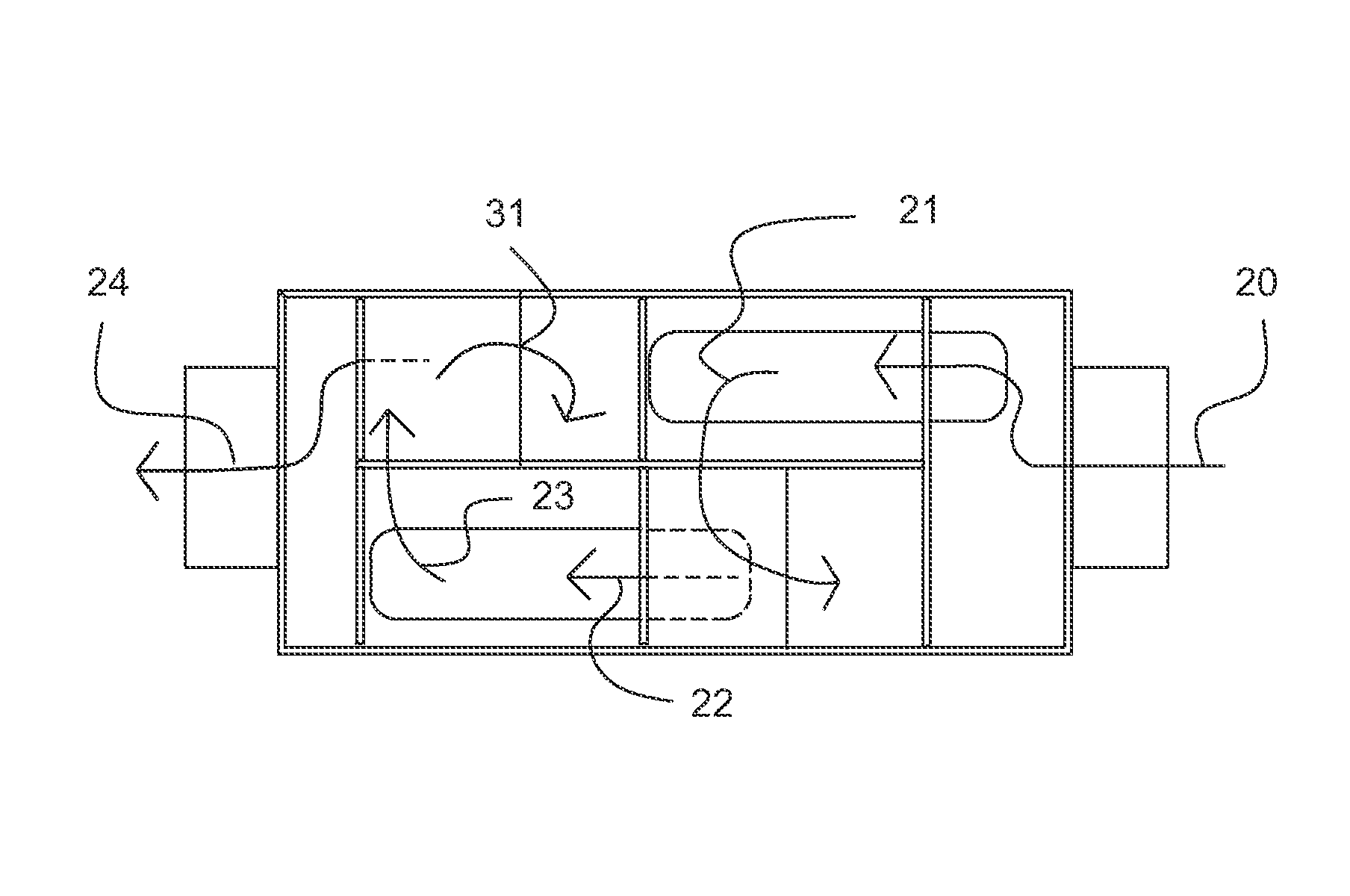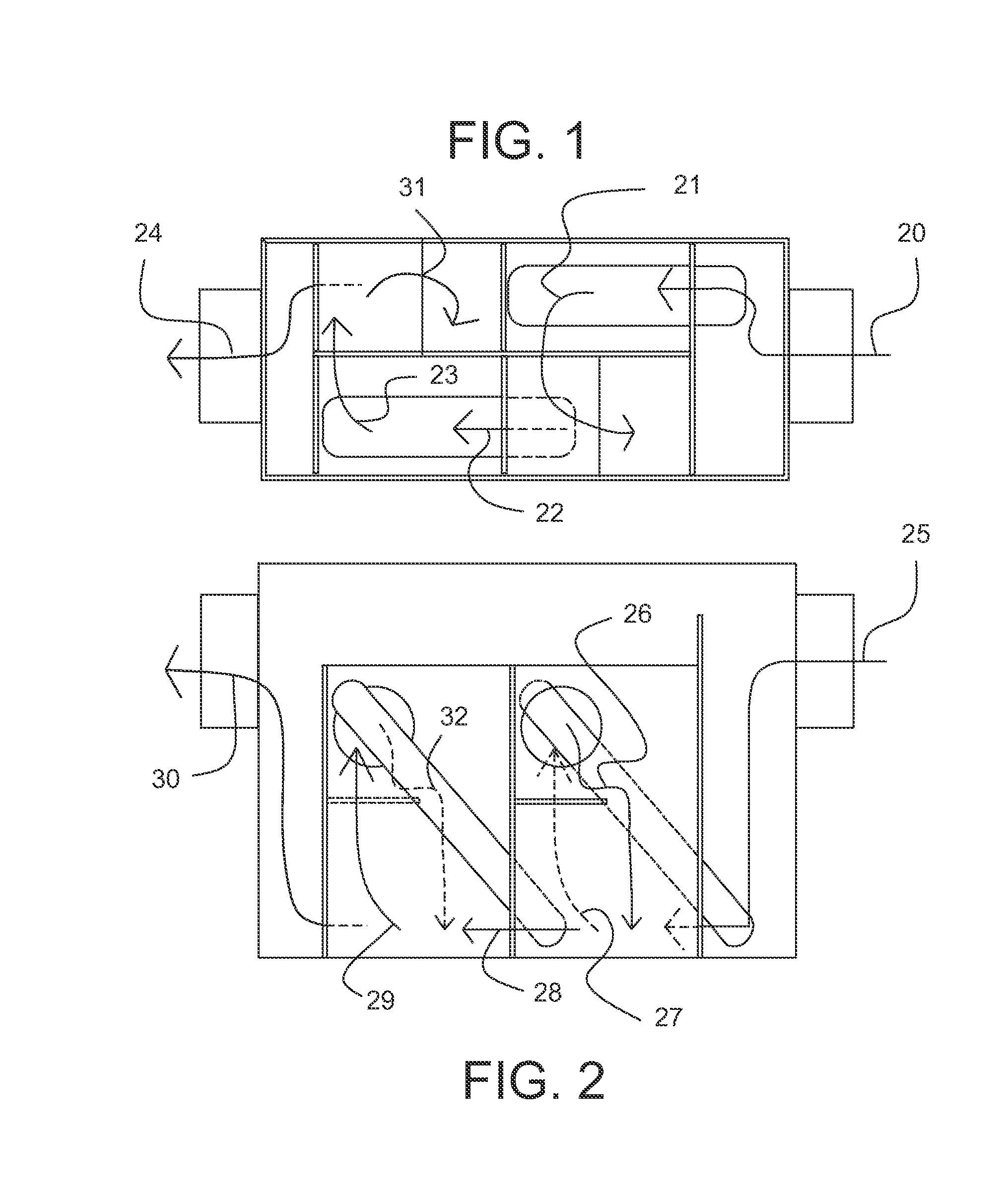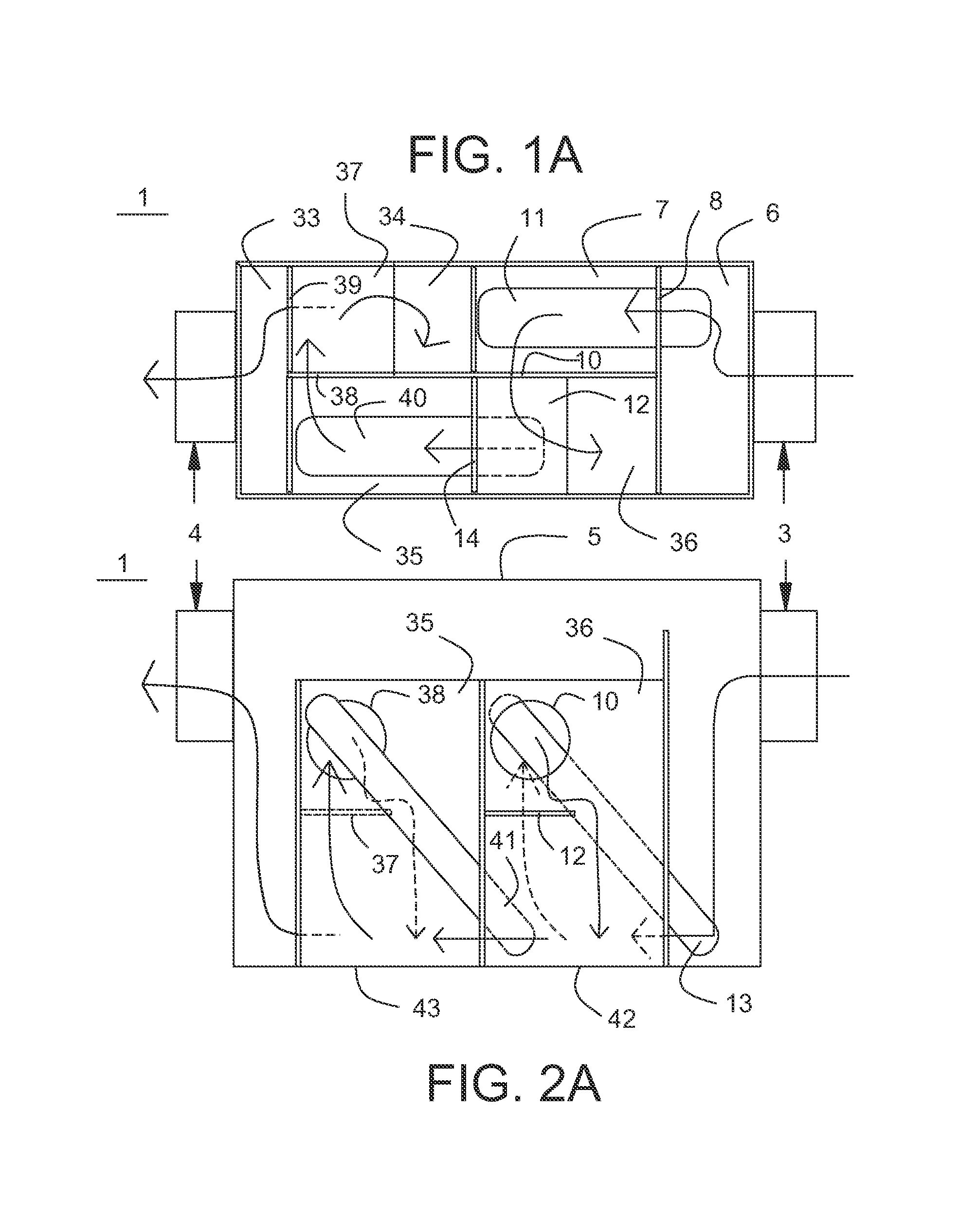Waste water processing system and method
a technology of water treatment system and water waste, applied in the field of waste water treatment system and method, can solve the problems of system problems, undesirable limits of oxygen level in water, etc., and achieve the effects of reducing chlorine count, reducing fecal coliforms, and lowering oxygen level in water
- Summary
- Abstract
- Description
- Claims
- Application Information
AI Technical Summary
Benefits of technology
Problems solved by technology
Method used
Image
Examples
Embodiment Construction
[0061]A method for reducing fecal coliforms in waste water comprises the steps of providing reactor 1 having removable cover 2, inlet 3 and outlet 4, first irradiating chamber 6, second irradiating chamber 7, third irradiating chamber 36, fourth irradiating chamber 35, fifth irradiating chamber 34, sixth irradiating chamber 33, first aperture 8, second aperture 10, third aperture 14, fourth aperture 38, fifth aperture 39, first UV lamp 11, second UV lamp 40, first horizontal shelf 12, second horizontal shelf 37, UV lamp control box 15, and heat conducting pipe 17;
[0062]directing water flow downwardly from inlet 3 (arrows 20, 25) into first irradiating chamber 6, then longitudinally through first aperture 8 into second irradiating chamber 7 (arrows 20, 25), then upwardly through second irradiating chamber 7 (arrow 21), then laterally inward through second aperture 10 into third irradiating chamber 36 (arrow 27), then downwardly onto first horizontal shelf 12 in third irradiating cham...
PUM
| Property | Measurement | Unit |
|---|---|---|
| Angle | aaaaa | aaaaa |
| Flow rate | aaaaa | aaaaa |
Abstract
Description
Claims
Application Information
 Login to View More
Login to View More - R&D
- Intellectual Property
- Life Sciences
- Materials
- Tech Scout
- Unparalleled Data Quality
- Higher Quality Content
- 60% Fewer Hallucinations
Browse by: Latest US Patents, China's latest patents, Technical Efficacy Thesaurus, Application Domain, Technology Topic, Popular Technical Reports.
© 2025 PatSnap. All rights reserved.Legal|Privacy policy|Modern Slavery Act Transparency Statement|Sitemap|About US| Contact US: help@patsnap.com



